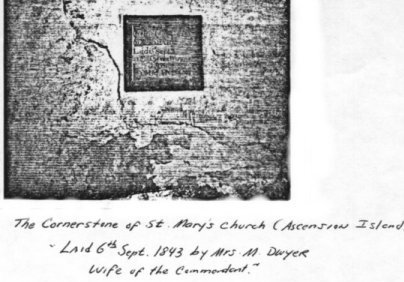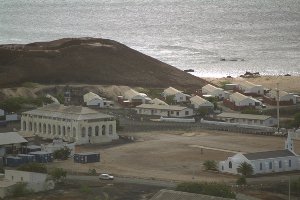![]()
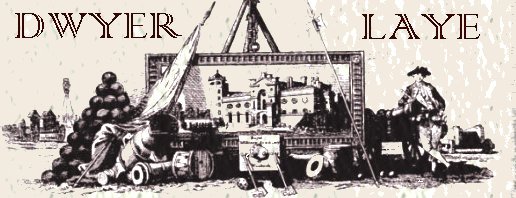
![]()
Royal Marine Commandants of
Ascension Island
-
- MORTALITY OF COMMANDANTS
- AT ASCENSION ISLAND ROYAL MARINES DARK - OTHERS GREY
Years In Office Major R. (John) Campbell Sep 1819 - Mar 1823 1821 Times article mentions Campbell taking command of island. "Ship News," Times 5 Nov. 1821. Lt. Colonel Edward NICOLLS (Nicholls) Mar 1823 - Nov 1828 Royal Marines. Assumed command in Nov. 1831, arriving on the Britomart. In the Times, reported that on Ascension Island there have been found "several recent deaths on this inhospitable and ill-fated colony" Mentions Lt. Sullivan who "died shortly after his arrival," and Lt. S.C. Stiles. Adds "Nine marines only of the 24 Colonel Nicolls took out - were able to do duty -the remainder . . . were in the hospital" "Portsmouth, Saturday," Times 21 Nov. 1831 But an earlier article shows Nichols (sic) improving road on island and with general good health of all. "Coast of Africa," Times 2 Jun. 1828. A 7 Sep 1826 article similar. For more information on Nicholls: http://www.heritage.org.ac/HS1frameset.htm Captain William BATE(S) - 3 Nov 1828 15 Apr 1838
- Died 1838 Ascension Island. Name spelled "Bates" by Dwyer. Possible ref to his death: Times, Saturday, Aug 25, 1838; pg. 2. Bates built a house for the commandant- Bate's Cottage. There is a memorial plaque at St Mary's for Bates which reads: "'IN MEMORY OF/CAPTAIN EDWARD BATES (incorrect) ROYAL MARINES/FOR 10 YEARS COMMANDANT OF THIS ISLAND/WHO DIED OF FEVER AT NORTH EAST COTTAGE/14th APRIL 1838/THIS TABLET WAS ERECTED ON THE REDUCTION OF THE ISLAND/IN 1882 AS A TOKEN OF ADMIRATION FOR HIS ENERGY/AND SKILL IN CARRYING OUT MANY VALUABLE WORKS/TO WHICH THE ISLAND STILL OWES MUCH OF ITS COMFORT/INTERRED IN THE GARRISON CEMETERY'
- Ascension Island Historical Society site reports:
- On the 3rd of November 1828, a new commandant arrived, Captain William Bate. Bate was to remain on Ascension for 10 years, and his vision and drive produced many changes on the island. When he arrived, Bate was not a happy man. He had a report produced on the state of the island. This painted a poor picture. The quarters were so poor that many men spent the nights on the beach. Water parties stationed at Dampiers were still living in caves cut out of the cinders, unsafe and damp. One New Years Day 1829, the foundation stone for a new water tank at Dampiers was laid. This tank is still there today, and later became known as Bate's Tank.
- On the 3rd of April 1829, in honour of the King's birthday, Bates gave the settlement the name that it has since known - Georgetown. Some honour! In June 1829, a great ally for Bate arrived, Captain Brandreth of the Royal Engineers. He was sent to the island to comment on some recommendations Bate had made. Brandreth's report paints a vivid picture;
- "The population at the period of my arrival consisted of about 140 Europeans, principally of the Royal Marine Corps, and 76 Africans, making a total of about 220 persons, including military and civil officers, a few white women (the wives of non-commissioned officers and privates of the Royal Marines, and black women and children.
- - - - -
- The supply of water at this time was scanty and precarious. It depended on springs, or rather drips in the precipitous banks, and the rains that could be collected in old casks and a few iron tanks. A stone tank in Georgetown, calculated to hold about 80 tons, was supplied with water from the mountains, a distance of six miles. Three carts, six oxen and three drivers were employed daily in the transport of about 360 gallons of this water."
- Given this sad picture, (very different from Nicholls upbeat story), the Admiralty agreed to changes. Georgetown was to move, away from the lowlands of the first settlement to the plateau it occupies today. Brandreth designed the buildings, and Bate and his men started work. The stone was quarried from the site of today's Chinatown, and at the start it was decided that all buildings would have guttering so that roof water would flow into the storage tanks.
- The first construction started within a month of Brandreth's departure; excavating to build a large stone tank capable of holding 1200 tons of water. The foundation stone was laid in 1830, and, St George's Tank as it became known, was the main water storage on the island for many years. All roofs in Georgetown were at one time connected into nearby tanks, and as these individual tanks overflowed, the water went into St George's. Water from the mountain was also fed into this tank. It's still there, the domed tank near the Church, and still holds water.
- - - - - -
- Unfortunately, Bate did not live to see the end of his labour. He died on the 15th of April 1838, of a virulent influenza, which also killed many of the garrison. No other commander was ever to equal Bate in enthusiasm or drive, and none has left such a lasting legacy.
- He lies in Georgetown's Deadmans Beach Cemetery. May he rest in peace. http://www.heritage.org.ac/avis3.htm Copyright � 2000, Graham Avis, Ascension Island Historical Society Read More: http://www.heritage.org.ac/avis4.htm
-
Entire above work can be found at JSTOR: "Communications on the Island of Ascension", by H. R. Brandreth; Caroline Power
Journal of the Royal Geographical Society of London � 1835 The Royal Geographical Society (with the Institute of British Geographers)
Captain R. S. TINKLAR Jan 1839 - Sep 1840 Died 14 Sep 1840 Ascension Island, after short illness.("Deaths," Times 07 Nov.1840). Assigned in early 1839 ("Portsmouth," Times, 01 Apr. 1839), Lived on island with his wife and family. She returned to England in March 1841 with nine invalids and her family. "Portsmouth, March 6," Times 08 March 1841. J. WADE Sep 1840 Dec 1840 Not mentioned by Dwyer. No references found in Times. Seems to have been only a temp Acting Commandant. Captain Hugh EVANS Dec 1840 - Dec 1840 Royal Marines, but not mentioned by Dwyer. His appointment found in article: "Portsmouth," Times 04 Dec 1840; pg. 6, following Tinklar's death. Evans later Major-General "Military and Naval Intelligence," Times 11 Aug. 1858: pg. 7. Appears he was reassigned from his appointment and never actually served. W. LEE (1st time) Dec 1840 - Apr 1841 Not mentioned by Dwyer. No references found in Times. Seems to have been a temp Acting Commandant. Captain H. BENNETT Apr 1841 - Dec 1841 Royal Navy. Not mentioned by Dwyer.d 1841 Ascension. Times of London reports: "The garrison at Ascension was extremely healthy, and the public works in progress, under the direction of the Commandant, Captain Bennett, R.N., were also in a very forward state, and the resources of the island rapidly improving."Her Majesty's Ship Conway," Times Tuesday, 11 Jan 1842; pg. 7. W. LEE (2nd time) Dec 1841 - Jul 1842 Not mentioned by Dwyer. No references found in Times. Seems to have been a temp Acting Commandant. Captain Thomas Peard DWYER Jul 1842 - Apr 1844 General Thomas Peard Dwyer RM - my g/g/g grandfather b Ireland c1798 (Diocese of Cork & Ross, County Cork, Ireland ?) d 26 Apr 1863, Lennox Lodge Southsea. England. Lennox Lodge at 62 Clarenence Parade to South Parade. Commandant of Ascension Island, 1842--1844, wife erected chapel there, St. Mary's Church below. Wife= MARY ANNE TOULMIN 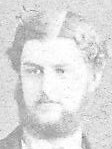
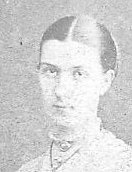
Dwyer below in his diary, complains of his authority sometimes being undermined, by discipline he met out being taken to someone else, who countermanded his order. At the same time period of 1842-1844, there was a Marine General, Simon Fraser. This must be the person. Fraser's diary was posted in part by The Islander.org website- archives: http://www.the-islander.org.ac/oldsite/1609.htm http://www.the-islander.org.ac/oldsite/1611.htm http://www.the-islander.org.ac/oldsite/1612.htm http://www.the-islander.org.ac/oldsite/1613.htm (Cannot find one page) Fraser, in what I've read, never mentions Dwyer personally, and speaks of a year's service. What service? I cannot locate any Marine general named Simon Fraser - Lt. Col. in East Indian Company who died 1845; a Simon Fraser, Lord Lovat- a Lt Col in Militia- born 1828; a Brevet Major in 1858 named Simon Fraser in the Marines; in 1835, there is mention of a Lt. Fraser in the Royal Marines; there are several General Simon Fraser of the Marines in earlier times. Very odd- there is no biography is Saur, or a promotion/assignment trail in the Times. Fraser family websites: http://www.clanfraser.ca/index.htm and http://www.fraserchief.co.uk/
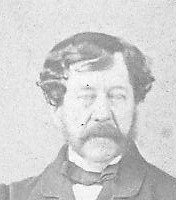 General Dwyer
General Dwyer
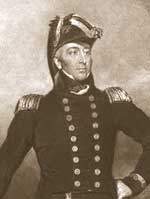 When the
island of St. Helena became the prison of
Napoleon, the occupation of Ascension
necessarily followed - and Sir George
Cockburn - (then Naval Commander-in-Chief
on that station) sent thither, without
delay, Commander - - - - - - with
officers and seamen under his command to
take possession of the island. [On
18 October 1815 Captain James White of
H.M. Sloop Peruvian, and Captain Nicholas
Charles Dobree of H.M. Sloop Zenobia went
on shore and took possession of the Island
in the name of King George III.-Source-
When the
island of St. Helena became the prison of
Napoleon, the occupation of Ascension
necessarily followed - and Sir George
Cockburn - (then Naval Commander-in-Chief
on that station) sent thither, without
delay, Commander - - - - - - with
officers and seamen under his command to
take possession of the island. [On
18 October 1815 Captain James White of
H.M. Sloop Peruvian, and Captain Nicholas
Charles Dobree of H.M. Sloop Zenobia went
on shore and took possession of the Island
in the name of King George III.-Source-  Prince de
Joinville
Prince de
Joinville 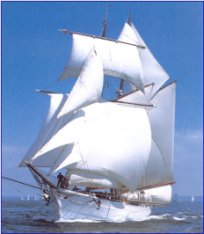 Belle Poule
Belle Poule 